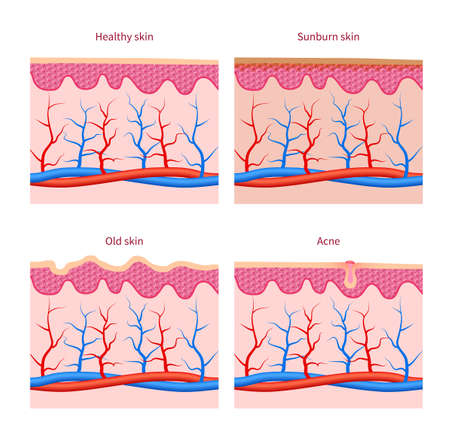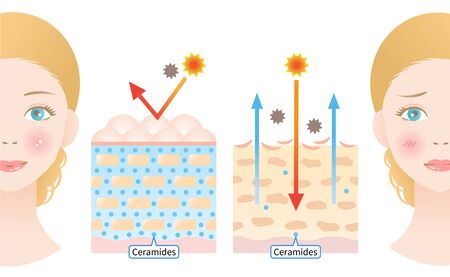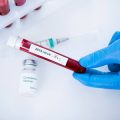Understanding Collagen and Its Role in Ageing
Collagen is often celebrated as the building block of youthful skin, but what exactly is it and why does it matter so much in the fight against ageing? In scientific terms, collagen is a structural protein that makes up approximately 75% of our skin’s dry weight. It provides strength, elasticity, and firmness—characteristics that are synonymous with a healthy, vibrant complexion. Here in the UK, where environmental factors such as damp weather and fluctuating temperatures can take their toll on our skin, maintaining optimal collagen levels becomes particularly important.
As we age, our bodies gradually produce less collagen. This natural decline typically begins in our mid-20s and accelerates throughout life, leading to visible signs of ageing such as fine lines, sagging, and loss of volume. Additionally, lifestyle choices common in British culture—like enjoying a cup of tea outdoors or spending time on scenic coastal walks—can expose us to UV rays and pollution, further depleting collagen reserves. Scientific research has repeatedly confirmed that reduced collagen production is a primary factor behind these age-related changes.
Understanding the science behind collagen’s role in skin health empowers us to make informed decisions about anti-ageing treatments. Whether you’re considering non-invasive procedures or simply looking to protect your skin from premature ageing, appreciating how collagen works—and how it changes over time—lays the foundation for any effective skincare strategy.
2. What is Non-Invasive Collagen Stimulation?
In recent years, non-invasive collagen stimulation has become a sought-after approach in the UK’s beauty and skincare landscape. The concept centres around boosting the skin’s natural ability to repair and rejuvenate itself—without the need for surgery or extended recovery periods. This is particularly attractive to Britons who often lead busy lifestyles and value treatments that allow them to return to their daily routines swiftly and discreetly.
Understanding Non-Invasive Treatments
Non-invasive treatments refer to procedures that do not break or significantly disrupt the skin’s surface. Instead of surgical incisions, these techniques use advanced technologies—such as microneedling and radiofrequency (RF)—to encourage the body’s own collagen production. Collagen is a vital protein that keeps our skin firm, smooth, and youthful, but its levels naturally decrease with age.
Why Are They Preferred in the UK?
| Reason | Description |
|---|---|
| No Surgery Required | Reduces risks associated with anaesthesia and invasive methods. |
| Minimal Downtime | Most people can resume work and social activities almost immediately. |
| Natural Results | Collagen stimulation works gradually for a subtle, refreshed appearance. |
| Cultural Preferences | The British tend to favour understated enhancements over dramatic changes. |
How Collagen Is Stimulated Without Surgery
Treatments like microneedling use tiny needles to create micro-injuries in the skin, prompting a healing response and increased collagen synthesis. Similarly, RF technology delivers controlled heat beneath the skin’s surface, stimulating fibroblast cells to produce new collagen. These processes are designed to be gentle yet effective, offering noticeable anti-ageing benefits without the tell-tale signs of cosmetic intervention or lengthy recovery periods. For those seeking a refreshed look while maintaining a natural aesthetic, non-invasive collagen stimulation stands out as an ideal solution aligned with UK sensibilities.

3. The Science of Microneedling
Microneedling, often referred to in Britain as collagen induction therapy, has become a mainstay in non-invasive anti-ageing treatments. This technique works by creating controlled micro-injuries on the skin’s surface using ultra-fine needles. These tiny punctures stimulate the bodys natural wound healing processes, prompting an increase in collagen and elastin production—two fundamental proteins responsible for skin’s firmness and youthful appearance.
How Microneedling Stimulates Collagen
When the skin senses these microscopic injuries, it immediately begins to repair itself. Fibroblast activity is triggered, which leads to the synthesis of new collagen fibres. Over time, this renewal process helps to reduce fine lines, improve skin texture, and restore a plump, radiant complexion. Unlike more aggressive procedures, microneedling does not remove layers of skin but rather encourages regeneration from within, offering gradual yet noticeable improvements.
Safety Profile and Best Practices
One of the key advantages of microneedling is its strong safety profile. When performed by trained professionals using medical-grade equipment—as is standard across reputable British clinics—the risk of complications remains minimal. Common side effects may include mild redness or swelling, akin to a light sunburn, which typically subsides within 24–48 hours. Strict hygiene protocols are followed throughout the UK to ensure client safety and optimal results.
What to Expect: Results in the UK Context
Clients in Britain can expect visible benefits after just one session, though a series of treatments—often spaced four to six weeks apart—is usually recommended for best results. Improvements include smoother texture, diminished scarring, tighter pores, and an overall rejuvenated appearance. As with all aesthetic procedures, consistency and proper aftercare are crucial; practitioners across the UK frequently advise avoiding direct sunlight post-treatment and using gentle skincare products to support healing. With its blend of efficacy and minimal downtime, microneedling has rightfully earned its place as a trusted option in British anti-ageing regimens.
4. The Role of RF (Radiofrequency) Therapy
Radiofrequency (RF) therapy has swiftly become a cornerstone in the world of non-invasive anti-ageing treatments, particularly across the UK’s most reputable aesthetic clinics. By utilising controlled electromagnetic waves to gently heat the deeper layers of skin, RF devices encourage natural collagen and elastin production—key elements for maintaining youthful, resilient skin. This process leads to tighter, firmer skin with minimal downtime, making it an attractive option for those seeking visible results without surgical intervention.
How RF Enhances Collagen Production
RF energy penetrates the dermal layers without harming the surface, causing gentle thermal damage that stimulates fibroblasts—the cells responsible for collagen synthesis. Over time, this not only improves skin texture but also reduces fine lines and wrinkles. The gradual process means results appear subtly and naturally, a preference among UK clients who often seek understated enhancements rather than dramatic changes.
Popularity in UK Aesthetic Clinics
The popularity of RF therapy in British clinics is underpinned by its versatility and safety profile. It is suitable for various skin types and tones—a crucial consideration in the diverse landscape of modern Britain. Many practitioners combine RF with microneedling for synergistic effects, further enhancing collagen stimulation and overall skin rejuvenation.
Comparison: Microneedling vs. RF Therapy in Anti-Ageing Treatments
| Treatment | Mechanism | Benefits | Downtime |
|---|---|---|---|
| Microneedling | Micro-injuries trigger healing & collagen production | Smoother texture, reduced scars & pores | Mild redness (1-2 days) |
| RF Therapy | Thermal energy stimulates deep collagen synthesis | Tightening, firming, wrinkle reduction | Minimal to none |
This rise in demand reflects a broader trend: UK clients value treatments that offer both efficacy and subtlety. When expertly administered, RF therapy delivers tangible anti-ageing benefits while respecting the natural beauty so highly prized within British aesthetics.
5. Benefits and Considerations for Anti-Ageing
Advantages of Microneedling and RF Treatments
Microneedling and radiofrequency (RF) therapies have become increasingly popular across the UK for those seeking non-invasive solutions to age management. One of the key benefits is their ability to stimulate natural collagen production without surgery, resulting in firmer, more youthful-looking skin. These treatments are particularly valued for their minimal downtime, allowing individuals to return to daily activities soon after their session. Many clients also appreciate the gradual yet noticeable improvements in skin texture and elasticity, which can help soften fine lines, reduce pore size, and enhance overall radiance.
Potential Risks and Limitations
While microneedling and RF are considered safe when performed by qualified professionals, it’s important to be mindful of potential risks. Temporary redness, mild swelling, or sensitivity may occur post-treatment. In rare cases, improper technique or unsuitable equipment can increase the risk of infection or pigmentation changes. Those with active skin conditions or certain medical histories should consult a healthcare provider before proceeding. Selecting a reputable clinic with experienced practitioners is crucial for minimising complications.
Points of Consideration Within the UK Landscape
The UK’s healthcare and beauty sectors offer an array of options for these anti-ageing treatments, but regulations can vary between providers. Always ensure your chosen clinic complies with local standards and is registered with relevant bodies such as the Care Quality Commission (CQC) where applicable. Additionally, personalised consultations are vital; practitioners should assess your skin type, discuss realistic expectations, and tailor treatment plans accordingly. Embracing a holistic approach—including sun protection and a consistent skincare routine—can further maximise results and maintain confidence in your appearance.
6. Choosing the Right Treatment in the UK
Selecting the most suitable non-invasive collagen stimulation treatment, such as microneedling or RF, is a personal journey—one that deserves care, knowledge, and confidence. In the UK, where regulations and standards are distinct, it’s essential to make informed choices for your wellbeing and satisfaction.
Seek Qualified Practitioners
Your safety and results depend largely on the expertise of your practitioner. Always choose professionals who are registered with reputable UK bodies such as the General Medical Council (GMC), the Nursing and Midwifery Council (NMC), or Save Face. Don’t hesitate to ask about qualifications, experience, and specific training in microneedling or RF technologies. A trustworthy practitioner will be transparent and encourage your questions.
Understand UK Regulations
The UK has specific regulations governing aesthetic treatments. Clinics should operate within CQC (Care Quality Commission) guidelines if medical procedures are offered. Treatments must use CE-marked devices that comply with British safety standards. Before booking, verify that both the clinic and its technology meet these legal requirements—your peace of mind is paramount.
Manage Your Expectations
Non-invasive treatments like microneedling and RF can deliver impressive anti-ageing results, but they require patience and realistic expectations. Discuss your goals openly during consultation. Ask about anticipated downtime, number of sessions needed, and maintenance schedules. A good practitioner will provide honest advice tailored to your unique skin type and concerns.
Empower Your Decision
Choosing an anti-ageing solution is more than a beauty step—it’s an act of self-care and empowerment. Embrace information, trust your instincts, and select partners in your journey who inspire confidence and respect your individuality. With the right guidance, you can move forward feeling informed, reassured, and ready to enjoy healthy, radiant skin on your own terms.

